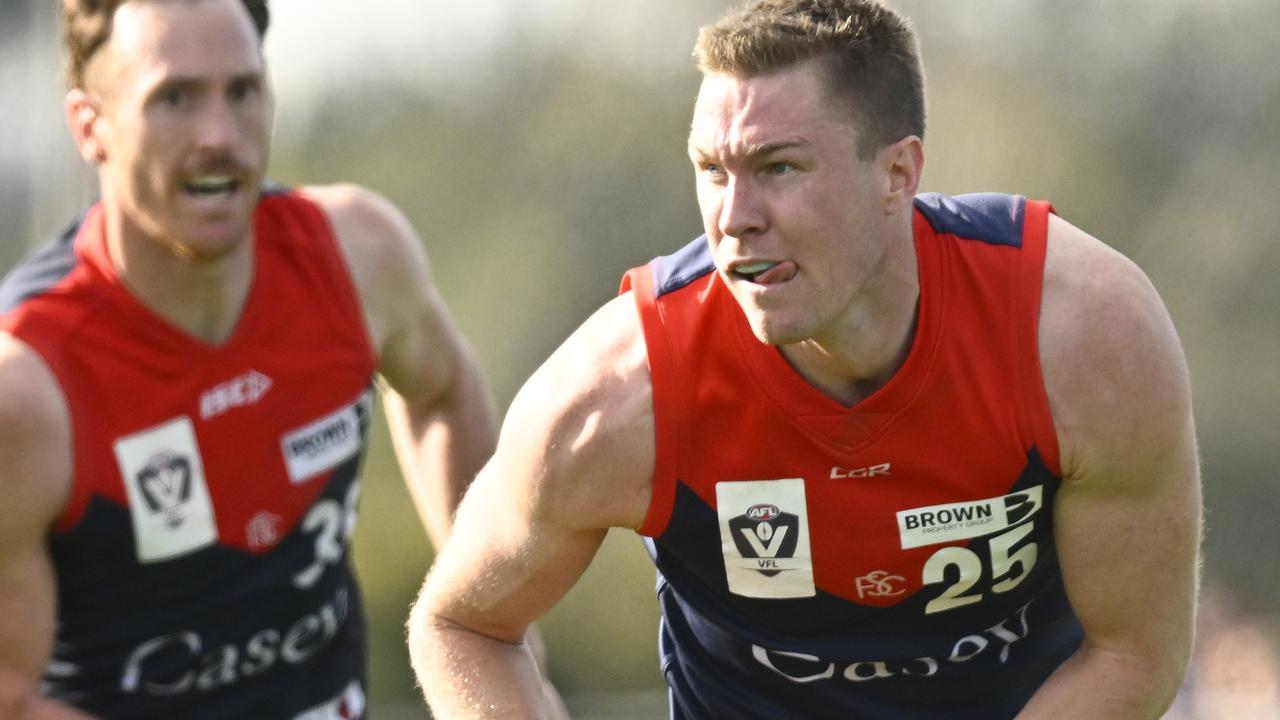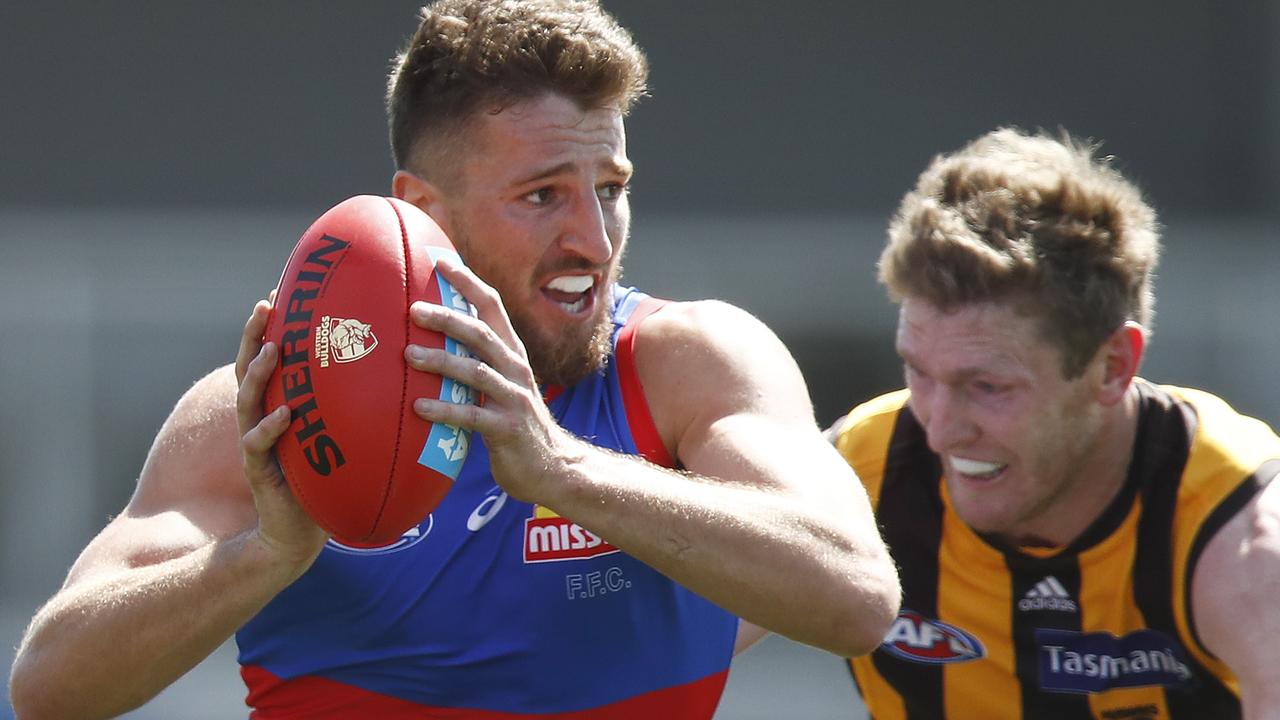How Patrick Dangerfield changed his game to increase Geelong’s premiership chances
PATRICK Dangerfield won last season’s Brownlow Medal by a ridiculous nine votes. How could he possibly improve? By improving the players around him, as DAVID KING explains.
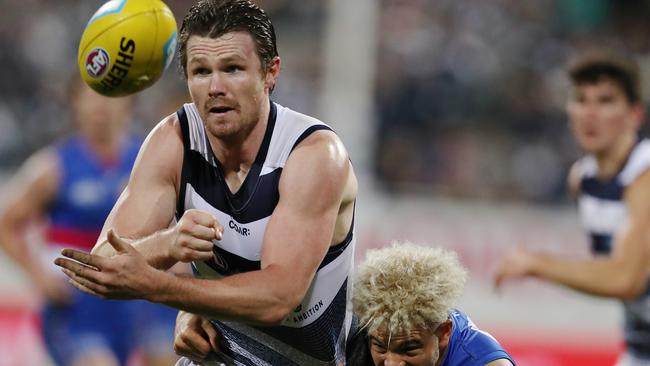
David King
Don't miss out on the headlines from David King. Followed categories will be added to My News.
THERE’S no secret that Patrick Dangerfield is the AFL’s most dominant player.
No surprises in witnessing his contested ball brutality nor his breakaway speed from a standing start exiting congestion.
We all admire what this man can do, but this year’s version is different. It’s Dangerfield 2.0.
SLOANE DANGER: GET READY FOR BATMAN v SUPERMAN
ADAM COONEY: MY ADVICE FOR FYFE AND DUSTY
AFL TEAMS: ALL THE INS AND OUTS FOR ROUND 11
Physically, nothing has changed.
Dangerfield again is the AFL’s No. 1 contested ball winner and among the top trio of clearance winners despite a mini form slump throughout the rib injury that affected the early period of his season.
Dangerfield’s improvements are due to his football IQ and his maturity regarding his own role, acceptance of the long game in reference to the length of the season, and that other Geelong players are not only accepting but desiring greater responsibility and challenge.
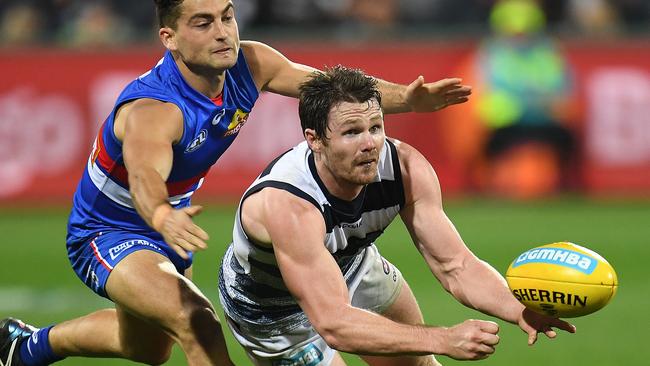
Danger is a student of the game, a keen football watcher and an articulate football voice, but lessons learnt from last year’s preliminary final loss provided Patrick with food for thought regarding his and Geelong’s game.
It clearly takes an astute person and a humility that dwarfs most, if not all AFL players, to identify that changes need to be made to the most complete AFL package.
Comparing Dangerfield’s numbers in 2016 and 2017 reveal minuscule drops in volume but a shift in damage.
Patrick this season is kicking 25 per cent less and handballing 20 per cent more than last season. It’s an honest, mature and considered assessment that, like Nathan Fyfe and Dustin Martin, his kicking isn’t always the weapon his team desires.
We are witnessing the same burst from stoppages but more often a handball to a teammate rather than a tired kick from a gassed superstar.
It doesn’t diminish in any way, shape or form the importance or uniqueness of his contested ball. It’s allowing more damaging play from Mitch Duncan or Steven Motlop — those first-receive types — to do what they do best with their elite disposal skills.
It basically engages more of a “team” contribution rather than a completely “follow me” (and Joel Selwood!) model.
It has allowed Dangerfield to conserve more fuel for the marathon that is the AFL season. It has also challenged those around the periphery to accept greater roles as the maturity of Dangerfield shines through the knowledge that two players alone cannot win the flag.
It’s not a desire for Patrick to personally do less, but a hunger to permit others to do significantly more.
In fact, Geelong is winning fewer clearances and contested possessions, but scoring eight points per game more than last season.
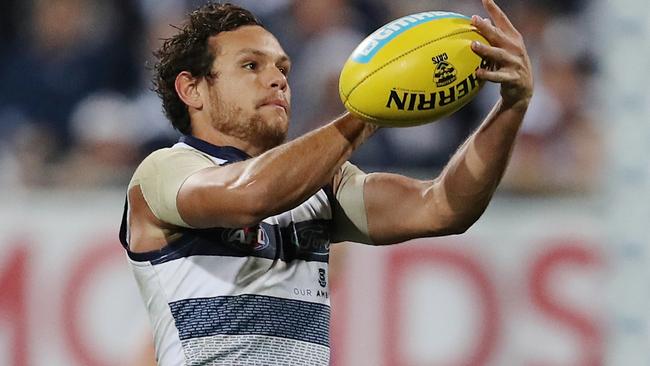
Danger won last season’s Brownlow Medal by nine votes with a ridiculous tally of 35. How could he possibly improve?
We may have seen the best of Patrick Dangerfield as the individual commodity — Dangerfield 1.0.
That model was more about individual brilliance and it’s possible the new version could have fewer three-vote games, but Dangerfield is weighting a premiership medallion above another Brownlow.
Of course, it doesn’t necessarily mean he can’t do both.
The leadership and constant organising around the stoppages is all-consuming and mentally taxing. It takes a toll.
The importance of Scott Selwood in assisting both Joel Selwood and Dangerfield has been understated. Scott is always pointing and instructing those who aren’t quite placed correctly. It allows Joel and Patrick to focus on their next move.
Scott Selwood also allows more minutes for Dangerfield to push forward or start inside the Cats’ forward 50. It’s only about a 5 per cent change, but it has availed an elevated goal return and greater accuracy.
He managed 24.24 last season but in 10 games this year has kicked 19.7.
Dangerfield has his legs back. Not being physically spent has assisted his conversion, even on his left leg.
The reduced minutes out of the crash and bash of the midfield should see a fresher Dangerfield attack the finals series. If this year’s preliminary final was again to offer 39 disposals personally and the team 30 more inside-50s than the opposition, then expect a different result.
Dangerfield is the AFL’s best last-quarter performer. He averages 40 SuperCoach points which has him considerably superior to Marcus Bontempelli (34), Lachie Neale (33) and Jackson Macrae (32).
Undoubtedly, his talent is a major factor but the new approach is clearly paying dividends when the games is up for grabs.
The honesty and maturity of this new approach is something generally unsighted from 27-year-old AFL footballers.
Generally, that comes from those who are nearly exiting the game, mid-30s types who are looking for one last opportunity for team success having wrung the rag dry of their individual performances — acts of almost desperation performed for premiership success.
Never a player in the prime of their career. Danger is different.

